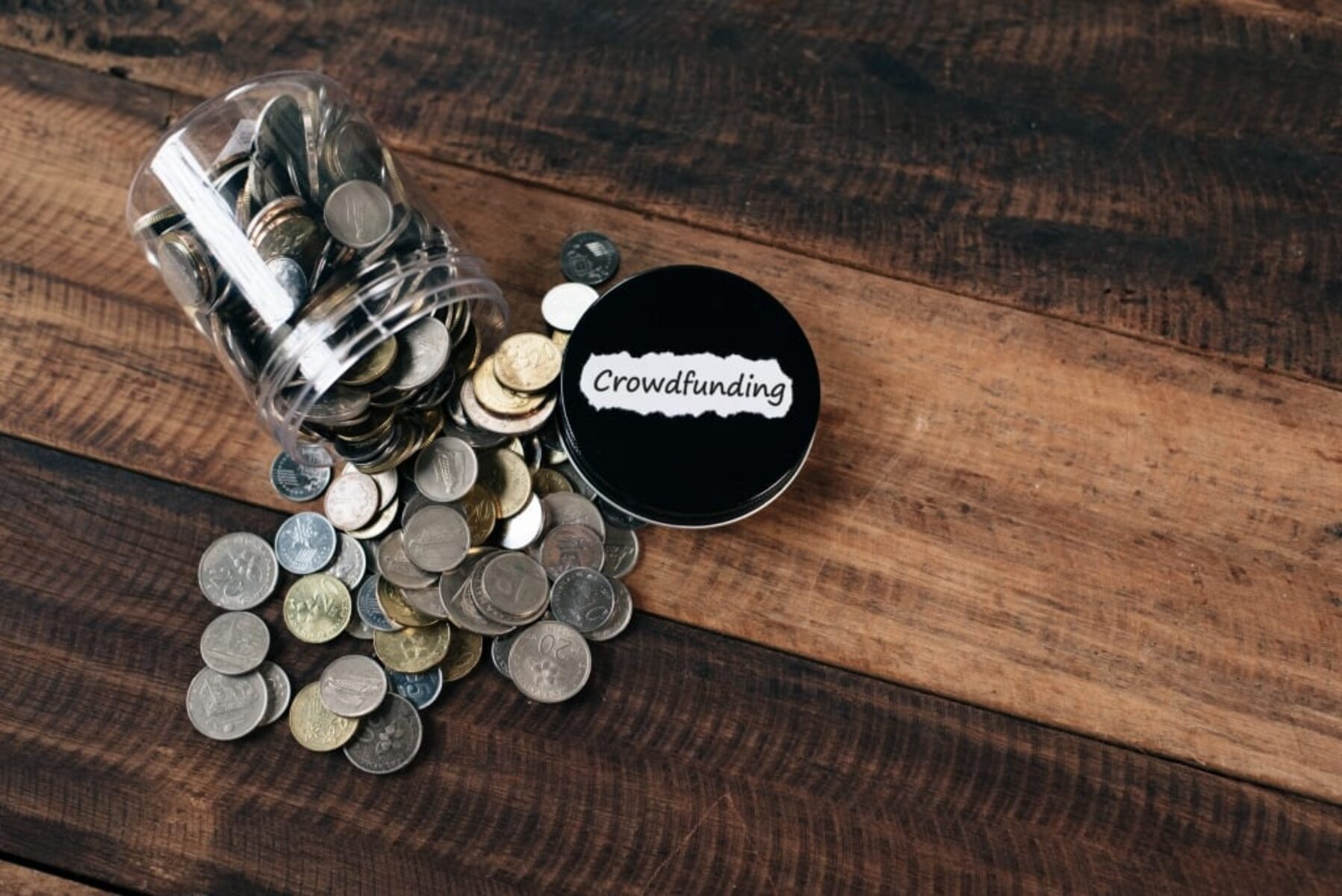High Competition
One of the major disadvantages of crowdfunding is the high level of competition that project creators face. With the popularity of crowdfunding platforms on the rise, there is an increasing number of projects vying for attention and funding. This intense competition makes it challenging for a project to stand out and attract the necessary support.
In a crowded marketplace, it becomes crucial for project creators to differentiate themselves from other campaigns. However, this can be a daunting task, especially for those with limited resources or marketing expertise. In order to overcome this hurdle, project creators must invest time and effort into creating a compelling campaign, one that captivates potential backers and convinces them to pledge their support.
Moreover, the high level of competition in the crowdfunding space means that not all projects will receive the desired funding. In fact, a significant number of campaigns fail to meet their fundraising goals, leaving project creators disappointed and unable to bring their ideas to life. The success rate of crowdfunding campaigns varies depending on the platform and the niche, but even the most successful platforms have an average success rate of around 40%.
Another challenge posed by high competition is the need for continuous promotion and engagement. Project creators cannot simply launch their campaign and expect the backers to come pouring in. They must actively promote their campaign through various channels, engage with potential backers, and constantly seek ways to increase visibility and reach. This requires a significant investment of time and effort, which can be a burden for project creators who may already be stretched thin with other responsibilities.
In summary, the high level of competition in the crowdfunding space poses a significant disadvantage for project creators. They must find ways to differentiate themselves and capture the attention of potential backers amidst a sea of campaigns. Additionally, the need for constant promotion and engagement adds to the challenges faced by project creators, requiring them to invest additional time and resources in order to increase their chances of success.
Lack of Control
One of the key disadvantages of crowdfunding is the lack of control that project creators may have over their own projects. When individuals or businesses opt for crowdfunding, they rely on a collective pool of backers to support their venture. While this can provide financial assistance, it also means that the project becomes subject to the opinions and expectations of the backers.
In a traditional funding scenario, the project creator has more autonomy and decision-making power. They can determine the direction, scope, and timeline of the project without significant external influence. However, with crowdfunding, project creators may have to compromise or make changes to accommodate the preferences of their backers.
Additionally, crowdfunding platforms often have their own set of guidelines and rules that project creators must adhere to. These rules may dictate the type of projects that can be funded, the use of funds, and even the communication with backers. Project creators may find themselves constrained by these guidelines, limiting their ability to fully exercise creative control or adapt their project as they see fit.
Furthermore, the lack of control extends to the potential for external factors to impact the project’s success. While project creators can put in their best efforts to realize their vision, there are external factors such as market trends, competition, and economic conditions that can affect the project’s outcome. This lack of control over external variables can be frustrating, especially for project creators who are accustomed to having full control over their work in traditional funding models.
In summary, crowdfunding can limit the control that project creators have over their own projects. They may have to make compromises to please backers and adhere to platform guidelines, which can restrict their ability to fully implement their vision. Additionally, external factors beyond the project creator’s control can influence the success of the venture. It is important for project creators to be aware of these limitations and evaluate whether crowdfunding aligns with their desired level of control and autonomy.
Non-Fulfillment of Promises
One significant disadvantage of crowdfunding is the risk of non-fulfillment of promises made by project creators to their backers. When individuals contribute to a crowdfunding campaign, they do so with the expectation that the project will be completed as promised and rewards or perks will be delivered in return for their support.
However, not all crowdfunding campaigns are successful in delivering on their promises. There have been cases where project creators faced unforeseen challenges or encountered financial difficulties, resulting in delays or even complete failure to fulfill their commitments. This can leave backers feeling disappointed, frustrated, and potentially out of pocket. It also damages the overall credibility and trust within the crowdfunding community.
There are several reasons why non-fulfillment of promises can occur in crowdfunding. In some cases, project creators may have underestimated the resources and time needed to bring their idea to fruition. They may encounter manufacturing or production difficulties, encounter unexpected costs, or face legal obstacles that they did not anticipate. Other times, project creators may lack the necessary expertise or experience to successfully execute their project, leading to delays or subpar results.
Furthermore, there is limited accountability and recourse for backers in the event of non-fulfillment. Unlike traditional investment models, where investors have legal protections and safeguards, crowdfunding does not offer the same level of security. Backers may have little to no recourse for seeking refund or compensation if the project fails to materialize. This can leave them with a sense of distrust towards future crowdfunding campaigns and reluctance to participate in the future.
To minimize the risk of non-fulfillment, it is crucial for backers to conduct due diligence before pledging their support. It is important to research the background and track record of the project creator, assess the feasibility and viability of the project, and understand the potential risks and challenges involved. Additionally, project creators themselves should be transparent and communicate openly with their backers, providing regular updates on progress and addressing any unforeseen setbacks or delays.
In summary, non-fulfillment of promises is a significant drawback of crowdfunding. Backers face the risk of projects failing to deliver on their commitments, leaving them disappointed and potentially at a loss. The lack of legal protections further exacerbates the issue. Both backers and project creators have a role to play in mitigating this risk through thorough research, open communication, and transparent project management.
Dilution of Equity
One of the potential drawbacks of crowdfunding, especially for businesses seeking equity financing, is the dilution of equity. When companies use crowdfunding as a means to raise capital, they often offer shares or ownership stakes in their business in exchange for investments. While this can provide much-needed funding, it also means that the original owners or founders give up a portion of their ownership.
This dilution of equity can occur when a company raises multiple rounds of funding through crowdfunding, as each round brings in new investors and potentially increases the number of shareholders. With more shareholders, the original owners’ percentage of ownership decreases, leading to a reduced level of control and decision-making power within the company.
Furthermore, the dilution of equity can impact the perceived value of the company. With each successful crowdfunding campaign, the company’s valuation may increase, as investors are willing to pay a higher price for ownership stakes. However, for the original owners, this means that future fundraising efforts may lead to further dilution, resulting in a lower ownership percentage and potentially a decreased market value for their shares.
Additionally, the dilution of equity can complicate matters when it comes to future fundraising, partnerships, or exit strategies. Potential investors or partners may view a high number of shareholders as a complication or deterrent, affecting their decision to invest or collaborate with the company. Similarly, when the time comes for an exit, such as a merger or acquisition, the dilution of equity can impact the value and desirability of the business.
Businesses considering equity-based crowdfunding should carefully analyze the potential consequences of dilution before proceeding. It is important to weigh the benefits of raising capital against the potential loss of control and ownership. Companies should also explore options such as issuing preferred shares or implementing shareholder agreements to protect their interests and maintain a level of control over the business.
In summary, the dilution of equity is a significant consideration for businesses using crowdfunding as an equity financing method. While crowdfunding can provide much-needed capital, it can also result in a reduction in ownership and control for the original owners. Careful evaluation and strategic planning are necessary to strike a balance between fundraising goals and maintaining a meaningful ownership stake in the company.
Oversight and Compliance Issues
One of the potential disadvantages of crowdfunding is the oversight and compliance issues that project creators may face. When conducting a crowdfunding campaign, project creators must adhere to various legal and regulatory requirements, depending on the jurisdiction and the type of crowdfunding being pursued. Failure to comply with these obligations can result in legal consequences, reputational damage, and potential financial penalties.
One of the main challenges is ensuring compliance with securities regulations. In many jurisdictions, the sale of securities or investment opportunities through crowdfunding platforms is subject to specific rules and regulations. These regulations aim to protect investors from fraud and ensure transparency in fundraising activities. However, navigating these complex regulations can be challenging, especially for project creators who may not have a background in securities law.
Compliance with intellectual property laws is another area of concern. Project creators need to ensure that their campaign does not infringe upon the intellectual property rights of others. This includes using original content, securing the necessary licenses or permissions for any copyrighted material, and avoiding trademark violations. Failure to comply with intellectual property laws can lead to legal disputes and damage the reputation of the project and its creators.
Furthermore, data protection and privacy regulations must be considered when conducting a crowdfunding campaign. Project creators often collect personal information from backers, such as names, email addresses, and sometimes financial details. Safeguarding this data and ensuring compliance with privacy regulations is essential to protect the privacy and trust of backers. Failure to comply with these regulations can result in legal penalties and damage the reputation of the project and its creators.
Moreover, crowdfunding campaigns that involve the sale of physical products need to comply with consumer protection laws. This includes providing accurate and clear product descriptions, meeting quality standards, and adhering to shipping and delivery policies. Failure to meet these obligations can lead to complaints, refunds, and negative reviews, affecting the reputation and credibility of the project.
Project creators must be diligent in conducting their due diligence and seek professional advice when it comes to understanding and complying with the various legal and regulatory requirements. They should invest time and resources in understanding the legal framework of their specific jurisdiction and ensure that they have the necessary policies, systems, and processes in place to meet these obligations.
In summary, oversight and compliance issues pose a significant challenge for project creators in the crowdfunding space. Adhering to securities regulations, intellectual property laws, data protection regulations, and consumer protection laws requires careful attention and professional guidance. Project creators should prioritize compliance to mitigate legal risks and maintain the trust and confidence of their backers.
Reputation Risk for Investors
One of the potential disadvantages for investors in crowdfunding is the reputation risk associated with supporting projects that fail or encounter difficulties. When individuals invest their money in crowdfunding campaigns, they place trust and confidence in the project creator to deliver on their promises. However, not all projects are successful, and investors face the risk of losing their investment or receiving subpar returns.
Investors who back unsuccessful or poorly managed projects may experience reputational damage. They may be seen as making poor investment decisions or being associated with projects that failed to deliver on their promises. This can impact their credibility and standing within the crowdfunding community and potentially affect their future investment opportunities.
Furthermore, investors may face challenges in distinguishing between trustworthy and fraudulent projects. While crowdfunding platforms usually have mechanisms in place to verify project creators and reduce the risk of fraud, it is still possible for fraudulent campaigns to slip through the cracks. Investors must conduct their due diligence and carefully assess the credibility and legitimacy of the projects they choose to support. Failure to do so may lead to significant financial losses and damage to their reputation as a prudent investor.
Additionally, investors may face challenges in obtaining accurate and timely information about the progress and performance of the projects they have invested in. Unlike traditional investments where regular reports and updates are expected, crowdfunding projects may provide limited or inconsistent updates, making it difficult for investors to gauge their progress. This lack of transparency can create uncertainty and increase the reputation risk for investors.
To mitigate reputation risk, investors should thoroughly evaluate the projects they consider supporting. They should research the project creator’s background, track record, and credibility. It is also essential to thoroughly review the project’s business plan, financial projections, and any available market research to assess its viability. Additionally, investors should diversify their investments across multiple projects and industries to minimize the impact of any individual project’s failure on their overall portfolio.
In summary, reputation risk is an inherent concern for investors in crowdfunding. Backing unsuccessful projects or being associated with fraudulent campaigns can damage an investor’s reputation within the crowdfunding community. It is crucial for investors to conduct due diligence, evaluate the credibility of project creators, and diversify their investments to mitigate this risk and protect their reputation as a savvy investor.
Intellectual Property Concerns
Intellectual property concerns are an important consideration for both project creators and backers in the crowdfunding space. Intellectual property refers to the legal rights that protect creations of the mind, such as patents, trademarks, copyrights, and trade secrets. Crowdfunding campaigns can present challenges regarding the protection and ownership of intellectual property.
One of the main concerns is the risk of copyright infringement. Project creators must ensure that they are not using copyrighted material without obtaining the necessary permissions or licenses. This includes using copyrighted images, videos, or music in campaign videos or promotional materials. Infringing on someone else’s copyright can lead to legal disputes, fines, or the removal of the campaign from the crowdfunding platform.
Trademark infringement is also a potential concern in crowdfunding. Project creators must be cautious not to use trademarks that belong to others without permission, especially in product or brand names. Using trademarks without authorization can result in trademark infringement claims and financial liabilities.
Furthermore, project creators should be mindful of protecting their own intellectual property rights. If a project involves a unique invention or innovative idea, the creator should consider filing for patent protection to prevent others from copying or profiting from their concept. However, patent applications can be costly and time-consuming, making it a challenge for project creators with limited resources.
For backers, there is a risk of investing in projects that may infringe upon someone else’s intellectual property. Backers should be cautious and ensure that the project creators have taken appropriate measures to protect their intellectual property rights and that their project does not violate any existing patents, trademarks, or copyrights.
To address these intellectual property concerns, project creators should conduct thorough research and obtain legal advice to ensure compliance with copyright and trademark laws. They should be proactive in protecting their own intellectual property rights and consider the cost-benefit of applying for patents. Backers should also be diligent in reviewing the project’s intellectual property disclosures and considering any potential risks before making an investment.
In summary, crowdfunding campaigns can present intellectual property concerns for both project creators and backers. Compliance with copyright and trademark laws, as well as protecting one’s own intellectual property rights, is crucial. Thorough research, legal counsel, and open communication can help mitigate these concerns and ensure that intellectual property is properly respected and protected in the crowdfunding ecosystem.
Payment Processing Risks
Payment processing risks are a potential challenge in the crowdfunding landscape. Crowdfunding platforms rely on secure and efficient payment processing systems to facilitate transactions between project creators and backers. However, there are several risks associated with payment processing that both parties should be aware of.
One of the main risks is the potential for fraudulent transactions. Crowdfunding platforms handle a large volume of financial transactions, making them an attractive target for hackers and scammers. Malicious actors may attempt to exploit vulnerabilities in payment processing systems to gain unauthorized access to financial information or conduct fraudulent transactions. This puts both project creators and backers at risk of financial loss and compromised personal information.
Moreover, payment processing systems can experience technical glitches or downtime, which can disrupt the flow of transactions. This could result in delays in funds being transferred to project creators or rewards being delivered to backers. Such disruptions can create frustration and dissatisfaction among both parties, potentially damaging the reputation of the crowdfunding platform and affecting the overall success of the campaign.
Additionally, there may be challenges and complications related to international payment processing. Crowdfunding campaigns can attract backers from all over the world, and different countries have varying regulations and payment systems. Issues such as currency conversion, transaction fees, and compliance with international financial regulations can present hurdles and delays in processing payments.
To mitigate payment processing risks, crowdfunding platforms implement various security measures to protect users’ financial data. They may use encryption, tokenization, and other security protocols to safeguard transactions and combat fraud. However, project creators and backers should also take precautions on their end. This includes using secure payment methods, regularly monitoring financial transactions, and being cautious of suspicious activities or requests for sensitive information.
Furthermore, project creators should ensure that they understand the payment processing system used by the crowdfunding platform they choose. They should familiarize themselves with the platform’s policies and procedures regarding payment processing, including payout schedules and any fees or charges involved. Backers should verify the legitimacy and security of the payment processing methods used by a crowdfunding campaign before making a financial commitment.
In summary, payment processing risks are a valid concern in the crowdfunding industry. Both project creators and backers should be aware of the potential for fraudulent transactions, technical glitches, and complications related to international payments. By taking appropriate precautions and understanding the payment processing systems in place, stakeholders can mitigate these risks and engage in secure and successful crowdfunding transactions.
Litigation Risks
Litigation risks are an important consideration for both project creators and backers in the crowdfunding space. As with any financial transaction or investment, there is the potential for disputes and legal issues to arise during or after a crowdfunding campaign.
One of the main litigation risks is the potential for legal disputes between project creators and their backers. In some cases, backers may feel dissatisfied with the outcome of a project or believe that the project creator has not fulfilled their obligations. This can lead to disputes over issues such as product quality, delivery delays, or misrepresentation of campaign details. When disputes cannot be resolved through negotiation or mediation, legal action may be taken, resulting in costly and time-consuming litigation.
Another litigation risk is the potential for intellectual property disputes. Project creators may inadvertently infringe upon the intellectual property rights of others, leading to legal claims and lawsuits. This could arise from using copyrighted material without permission, creating a product that infringes on existing patents or trademarks, or misappropriating trade secrets. Intellectual property disputes can result in significant legal expenses, damages, and reputational harm for both the project creator and the backers.
Furthermore, there is the risk of regulatory lawsuits or investigations. Crowdfunding campaigns must comply with various laws and regulations, and failure to do so can result in legal consequences. Regulatory authorities may investigate campaigns for potential fraud, violations of securities laws, or non-compliance with consumer protection regulations. This can lead to legal sanctions, fines, or even criminal charges, causing financial and reputational damage to both project creators and backers.
To mitigate litigation risks, project creators should be transparent and provide accurate and detailed information about their campaign. They should communicate openly with their backers, address any concerns or issues that arise promptly, and fulfill their obligations as outlined in the campaign. Backers should exercise due diligence and thoroughly research the project and project creator before making a financial commitment. This includes assessing the project’s feasibility, conducting background checks on the creator, and reading through the campaign details and disclosures carefully.
In addition, both parties should consider incorporating dispute resolution mechanisms into their agreements or terms of service. This could include provisions for mediation or arbitration to resolve disputes instead of resorting to lengthy and costly litigation. Using alternative dispute resolution methods can help preserve relationships, save time, and reduce legal expenses for all parties involved.
In summary, crowdfunding campaigns carry litigation risks for both project creators and backers. Disputes can arise from issues such as project performance, intellectual property infringement, or regulatory non-compliance. By fostering transparency, conducting due diligence, and incorporating mechanisms for dispute resolution, stakeholders can mitigate the risks of litigation and maintain a positive crowdfunding experience.
Exit Strategy Challenges
Exit strategy challenges can arise for both project creators and investors in the crowdfunding landscape. An exit strategy refers to a plan for project creators or investors to recoup their investments or gain liquidity by exiting the project or company. However, crowdfunding campaigns can present unique challenges when it comes to achieving a successful exit.
For project creators, one of the challenges is effectively transitioning the crowdfunding-funded project into a sustainable business. Successfully delivering on the project and fulfilling obligations to backers is just the first step. Project creators must then navigate the complexities of scaling up, generating revenue, and attracting additional investment or customers. Failure to do so could result in stagnation or even the eventual closure of the project, leaving both backers and creators without a viable exit strategy.
Another challenge for project creators is attracting follow-on funding or strategic partnerships. Crowdfunding campaigns often serve as a starting point for early-stage businesses, but additional funding may be necessary to further develop the project or bring it to market. However, traditional investors may view crowdfunded projects differently and may be hesitant to invest due to the diluted ownership or the perception that the project failed to secure mainstream funding. This can make it difficult for project creators to secure the necessary capital for growth and hinder their exit plans.
For investors, the lack of secondary markets can pose challenges for achieving an exit. Unlike traditional investments such as stocks or real estate, where investors can easily sell their assets on secondary markets, crowdfunding investments often lack a liquid market. This means that investors may be unable to easily sell their ownership stake or recoup their investment until the company is acquired, goes public, or engages in another exit event. This lack of liquidity can result in investors having their capital tied up for an extended period, limiting their ability to exit and potentially affecting their overall investment strategy.
Furthermore, the valuation of crowdfunded companies can present challenges for investors seeking an exit. The valuation of early-stage companies is usually speculative and based on assumptions. If the company’s actual performance deviates significantly from these assumptions, it can impact the potential returns for investors. It may be challenging to find buyers willing to pay a premium for the ownership stake, leading to difficulties in achieving an exit at a desirable valuation.
To navigate these challenges, project creators should focus on building a sustainable business model and demonstrating continued growth and revenue generation. They should also seek strategic partnerships or alternative sources of funding to support the long-term development of their project. Investors should thoroughly assess the investment potential and the potential for an eventual exit, considering factors such as the business model, market potential, and scalability. Diversifying investments across different projects and industries can also help mitigate exit strategy challenges.
In summary, exit strategy challenges are inherent in the crowdfunding space. Both project creators and investors must carefully consider the potential obstacles and plan accordingly. Building a sustainable business, attracting follow-on funding, and finding liquidity opportunities are essential for successful exits. By understanding and addressing these challenges, stakeholders can increase their chances of achieving a favorable exit strategy.











![How Does Crowdfunding Work? [Beginner-Friendly]](https://robots.net/wp-content/uploads/2020/07/How-does-crowdfunding-work-300x212.jpg)













